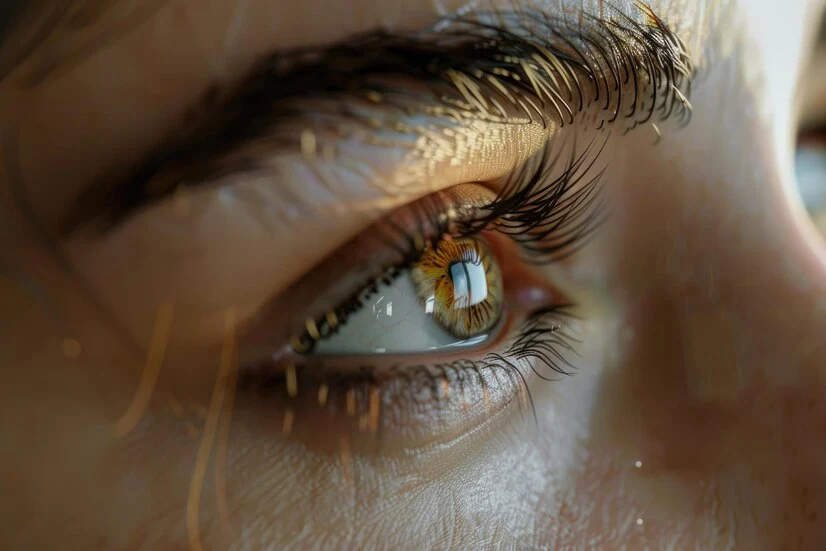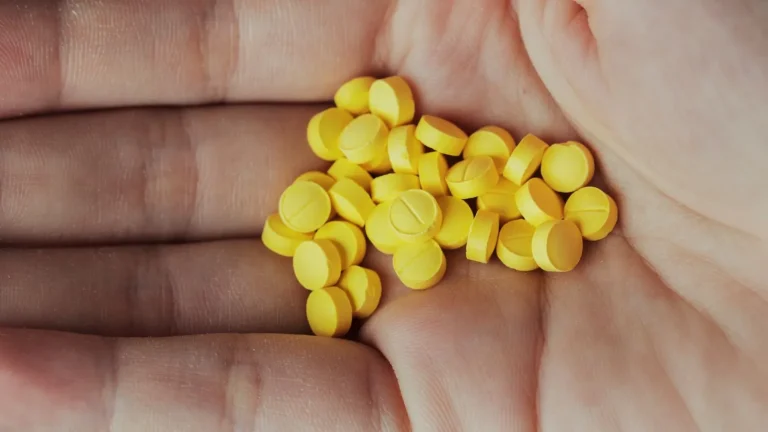
Can Dry Eyes Cause Blindness? Essential Eye Health Facts
- livewell
- August 18, 2024
- Noah Bennett
Introduction
Dry eye occurs when the tears important for eye lubrication are either of poor quality or insufficiently produced, which is important for keeping the eyes healthy. If you leave dry eyes untreated, it can lead to several serious conditions. The most common issues you can face are pain, blurry vision, discomfort, and permanent eye damage. Furthermore, various factors contribute to this condition, and determining the cause is challenging. In this blog, we will explore “Can dry eyes cause blindness”.

What are the causes of Dry Eyes?
Multiple factors contribute to dry eyes. Various conditions can disrupt the natural tear film of the eye. The eye’s tear film has three layers: mucus, oil, and water. Additionally, an issue with any of these layers causes an imbalance of tear films, leading to poor quality and quantity of tears. However, can dry eyes cause blindness?”. Let’s discuss the causes of dry eyes
MGD and Blepharitis
Meibomian gland dysfunction and Blepharitis are some of the causes of dry eye conditions. These are the conditions in which oil glands clog and cause inflammation, thus resulting in dry eye disease.
Medical Issues
Certain medical conditions like Rheumatoid Arthritis, Thyroid Issues, Vitamin A deficiency, etc. can cause dry eye disease. For example, some weird vision problems may even be early warning signs of other serious conditions like Alzheimer’s disease.
Excessive Screen Time
Excessive screen use without any rest or break can result in dry eye. If you often experience itchy or watery eyes while using screens, you might benefit from top allergy eye drops.
Age and Sex
Age can be a factor for dry eye. People older than 50 years are more prone than other age groups. Moreover, women experiencing hormonal changes due to pregnancy or menopause are more likely to develop dry eye symptoms.
Certain Medications
Certain medications such as antidepressants can cause dry eyes.
Contact Lenses
Improper use and unhygienic contact lenses can contribute to dry eyes.
Lifestyle
The use of cosmetic products comprising toxic ingredients can cause dry eyes.
Environment
Environmental conditions such as extreme cold or dry climate can cause dry eyes.
What are the symptoms of Dry Eyes?
Dry eyes can have many symptoms ranging from mild to severe irritation. Moreover, it is important to recognize symptoms early to prevent complications. Some common symptoms of dry eyes are as follows:
- One of the most common dry eye symptoms is a continuous stinging sensation.
- Individuals with dry eyes can experience photophobia which means sensitivity to light. Additionally, bright lighting can result in pain and discomfort.
- Dry eyes can cause fatigue, particularly while reading, using screens, and performing a task that needs visual focus.
- It can cause redness. Moreover, inflammation or irritation causes redness.
- Dry eyes can result in blurry vision because the tear film is unstable. However, sometimes the blurriness disappears with blinking.
- Individuals with dry eyes can sometimes feel something in their eyes like an eyelash, etc.
- Some individuals might have mucus around or inside the eyes.
- Sometimes dry eyes can result in excessive tearing. However, this excessive tearing does not give sufficient lubrication and solve the underlying condition.
Furthermore, if someone experiences any of these symptoms, he/she should consult a healthcare professional.
How to diagnose Dry Eyes Condition?
Healthcare professionals use different diagnostic procedures for dry eyes such as:
Eye examination
The healthcare professional comprehensively examines the eye and asks about the patient’s medical history and overall health condition to determine the cause of dry eyes.
Schirmer Tear Test
The eye specialist conducts this test to measure the patient’s tear production. In the Schirmer tear test, the eye specialist places blotting paper strips under the patient’s lower eyelids. Furthermore, after five minutes the eye specialist measures the quantity of strips the patient’s tear soaks.
TBUT Test
Tear breakup time measures the tear film’s stability. The healthcare professional places the fluorescein dye drop in the patient’s eye and evaluates the time it takes for dry spots to appear on the eye surface after blinking. Moreover, a short TBUT determines the tear film instability.
Osmolarity Test
Healthcare professionals conduct this test to measure the osmolarity in a patient’s tear. Additionally, high osmolarity shows that the patient’s tear is not sufficiently moisturizing his/her eyes.
Surface Staining
The ocular surface staining test involves using special dyes such as fluorescein, rose Bengal, etc. Moreover, these dyes identify the dryness regions, conjunctiva, and other eye abnormalities.
Checking markers
Healthcare professionals perform tear tests to check for markers of dry eye disease, such as decreased lactoferrin levels.
Furthermore, the healthcare professional will recommend treatment after evaluating the patient’s eye condition.
How to treat Dry Eyes?
For most individuals with mild symptoms, it’s sufficient to use non-prescribed eye drops regularly. Moreover, healthcare professionals can recommend other treatment options if a patient has severe or persistent symptoms.
Furthermore, some treatments can reverse or manage the condition resulting in dry eyes, while others improve the tear quality or prevent the quick draining away of tears.
Punctal Plugs
Punctal plugs treat dry eyes by using small silicone plugs. The healthcare provider closes the small opening (puncta) located in the inner corner of the upper and lower eyelids. Moreover, this action retains both artificial and natural tears.
Treating Underlying Issues resulting in Dry Eyes
In some circumstances, the healthcare provider treats underlying issues to manage the symptoms of dry eyes. For example, if a certain medication is causing dry eyes, the eyecare specialist can advise the patient to take an alternative that doesn’t result in dry eyes.
Medications
Certain medications to treat dry eyes are:
- Varenicline (Tyrvaya ) increases tear quantity.
- Anti-inflammatory drugs can reduce inflammation.
- Corticosteroids for reducing inflammation. However, healthcare professionals don’t recommend corticosteroids for long-term use.
- Omega-3 supplements can treat dry eyes.
How to Prevent Dry Eyes?
You can prevent dry eyes by taking the following measures:
Changes in Lifestyle
- Introduce a humidifier into your house and workspace, especially during winter, to combat dry air.
- Be mindful of taking a break after every twenty minutes of screen time. For instance, look at something away from you for 20 seconds. Moreover, this practice will help reduce the risks of dry eyes.
- It’s crucial to maintain eye hygiene. For instance, if an individual uses contact lenses, he/she should follow the instructions to clean them properly.
- Furthermore, avoid rubbing your eyes with unclean hands to reduce the risk of contamination.
Adequate Nutrition
Diet and hydration play a crucial role in healthy eyes. Additionally, adequate hydration improves tear quality and quantity. Moreover, a diet rich in omega-3 fatty acids can support eye health.
Environmental Conditions
As mentioned earlier, the humidifier is effective against dry air. Moreover, using sunglasses will provide extra protection and safety against unfavorable environmental conditions.
Why tears are important for eye health?
Tears play an important role in maintaining eye health. They contribute to clear vision and protect against environmental hazards. Some of the functions of tears are as follows:
Keeps the Eye Moist
They keep the eye moist. The tear film has three layers and they have specific functions. These three layers are as follows:
- The lipid layer is the outermost layer. Its function is to prevent the tears from evaporating and maintain the eye’s surface lubrication.
- An aqueous layer is present in the middle. The function of the aqueous layer is to give oxygen, important nutrients, and moisture to the cornea.
- The mucin layer is the innermost layer. Moreover, its function is to ensure the even distribution of tear film across the eye.
Furthermore, these layers work together to keep the eyes healthy.
Supplying Nutrients
The aqueous layer is enriched with oxygen and nutrients. This is important for keeping the corneal epithelium healthy. As the cornea does not have blood vessels, it depends on an aqueous layer for nourishment. Moreover, tears directly supply these nutrients to the corneal cells.
Clear Vision
Tears play an important role in keeping the vision clear. It moistens and smooths the cornea and ensures light passes through the eyes without obstruction.
Protection Against Environmental Hazards
It protects against environmental contaminants like dust, airborne pathogens, etc. When foreign material enters the eye, tears play a role in washing away the contaminants. Moreover, this reduces the infection. Moreover, certain enzymes in tears possess antimicrobial properties. They neutralize microbes and protect the eyes from irritation and infection.
Removal of Waste
Tears remove waste products from the surface of the eyes. Moreover, it prevents the buildup of toxic substances that could affect the cornea or other eye parts.
Healing
Tears help healing of minor wounds or injuries. In case of an eye injury, a tear provides nutrients and moisture that support healing.
Repairing
The tear film produces a smooth surface that helps repair damaged epithelial cells.

What is the connection between Dry Eyes and Corneal Damage?
The cornea covers the eye front. It plays an important role in directing light on the retina, thus enabling clear and proper vision. The tear film is important for maintaining a healthy cornea. Moreover, this nourishes the cornea, removes dirt, and prevents infection.
The cornea becomes susceptible to damage when the dry eyes affect the tear film. The lack of sufficient lubrication results in cornea dryness, thus forming small cuts or erosions on the surface. If it is left untreated it can result in complications such as:
Keratitis
The dryness, infection, or injury can result in corneal inflammation or keratitis. The chronic conditions, increase the risk of keratitis which can cause vision issues.
Corneal Ulcers
Microbial infections cause an open sore in the cornea. Dry eyes allow the pathogens to penetrate the corneal surface, thus increasing the infection risk. Moreover, corneal ulcer is a serious condition that needs immediate medical attention. It can cause scarring if left untreated and can result in permanent vision loss or sometimes blindness. So, the answer to the question “Can dry eyes cause blindness” is it is not directly associated with causing blindness but sometimes corneal ulcers can result in blindness.
Corneal Scarring
Repeated damage to the cornea because of chronic dry eye conditions causes corneal scarring. Moreover, corneal scarring, results in light obstruction, causing blurry vision. Can dry eyes cause blindness? The answer to this question is that certain medical conditions like severe corneal scarring can result in blindness.
Can Dry Eyes cause blindness?
Now let’s discuss “Can Dry Eyes Cause Blindness” or “Can Dry Eye Syndrome Cause Blindness?”.
Dry eyes are less likely to cause blindness. However, some complications can lead to vision loss. Although blindness due to dryness is rare, certain complications from corneal damage can cause blindness.
For example, if left untreated, the corneal ulcer can progress to the stage where it causes scarring, which can result in blindness. Additionally, in such cases, a corneal transplant can restore eyesight. However, whether a corneal transplant will restore the vision remains uncertain.
Furthermore, individuals with dry eyes who suffer from other medical issues like rheumatoid arthritis, etc. are at high risk of developing eye-related complications. This can result in corneal damage, thus increasing the risk of blindness.
How long does Dry eye last?
Dry eyes can be temporary or permanent. Exposure to certain allergens and prolonged screen time can cause temporary dry eyes. However, permanent dry eye occurs when the symptoms last several months, weeks, or days. The patient requires treatment in any of these cases.
When to seek medical attention?
As already discussed, “Can Dry Eyes cause blindness?”. So now it’s important to understand when to attend the healthcare professional to prevent complications and effectively manage the condition. Some signs of when to seek medical attention are as follows:
Consistent Dryness
If an individual faces constant dryness or irritations, he/she should consult a healthcare provider.
Persistent Redness and Pain
In case an individual has persistent redness, it is important to consult a healthcare professional. Furthermore, intense eye pain also requires immediate medical attention.
Light Sensitivity
If an individual faces an unusual sensitivity to light, he/she should seek immediate medical attention.
Blurriness
If an individual finds it difficult to focus and faces blurriness and blinking doesn’t improve it, this condition requires immediate medical attention.
Eyes discharge
Thick, yellow, or green-colored discharge from the eyes, particularly when accompanied by pain, is a sign of an infection that needs immediate medical treatment.
Inflammation
The inflammation around the eye accompanied by pain, requires immediate medical treatment.
A sensation of something in the eyes
If an individual constantly feels something in their eyes even after washing it or using eye drops, this requires immediate medical attention.
Frequent Symptoms of Dry Eyes
The frequent dry eye symptoms even after medications, require immediate medical attention.
Thus, seeking medical attention at the right time can prevent complications.
Conclusion
In conclusion, Dry eye is a common condition. This condition is due to insufficient or poor-quality tear production. Can Dry eyes cause blindness? The answer to this question is that Dry eyes are not directly associated with vision loss, but certain conditions if left untreated can result in blindness.
For instance, If an individual experiences prolonged dryness and irritation, these conditions can cause corneal damage, thus leading to corneal ulcers. Without timely treatment, these ulcers can result in vision impairment, and in severe cases, it can result in blindness. Moreover, underlying medical conditions like autoimmune disorders and using certain medications can worsen dry eye symptoms thus increasing the complication risk.
An individual must detect severe dry eye symptoms and immediately consult a healthcare professional. Understanding the risks and proper preventive measures can help manage dry eye conditions.
FAQ
Hello, What Can We Help You Find?
Are you looking for something? We are here to assist you. These are the questions
asked by our customers tell us yours.
Dry eye is a common condition. This condition is due to insufficient or poor-quality tear production.
The symptoms are a burning feeling, redness, blurry vision, photophobia. Some people may experience excessive tearing.
Dry eyes are not directly associated with vision loss, but certain conditions if left untreated can result in blindness.
Certain factors can cause dry eyes such as hormonal imbalance, aging, certain medications and medical conditions, excessive screen time, etc.
Severe dry eyes can result in scarring, chronic inflammation, and corneal ulcers. These conditions can result in blindness if left untreated.
The cornea relies on tear film for protection. The issue in tear film can result in damaging or infecting the cornea, thus leading to vision issues and scarring.
Use artificial tears, take a pause while using a screen, protect your eyes from harsh environmental conditions, drink adequate water, etc.
It includes punctal plugs, surgery, and eye drops. Consulting a healthcare professional is crucial before starting any treatment.
They are important for moisturizing and lubricating eyes, supplying nutrients, clear vision, protection against contaminants and microbes, etc.
Chronic dry eye doesn’t cause blindness itself, but no treatment and proper management can lead to complications causing blindness.
How to diagnose Dry Eyes Condition?
Hello! This is Customer Support
Feel free to contact us and we will provide you with information and guidance
Interesting Posts


WHAT DOES A CROSS MEAN ON NUTRITION FACTS?
March 13, 2024


12 Important Preventive Services Covered By Medicare Advantage Plan
October 13, 2023

Will Donald Trump Fix Medicare’s Biggest Issue in 2025?
January 2, 2025

Wherever the art of Medicine is loved, there is also a love of Humanity
- Hippocrates Tweet
Related Posts

Side Effects from Benzonatate You Need to Take Care of
August 4, 2025

Albuterol VS. Symbicort: Key Benefits and Risk Factors
June 26, 2025

Intense Bloating After Eating: What’s Really Happening?
June 26, 2025



